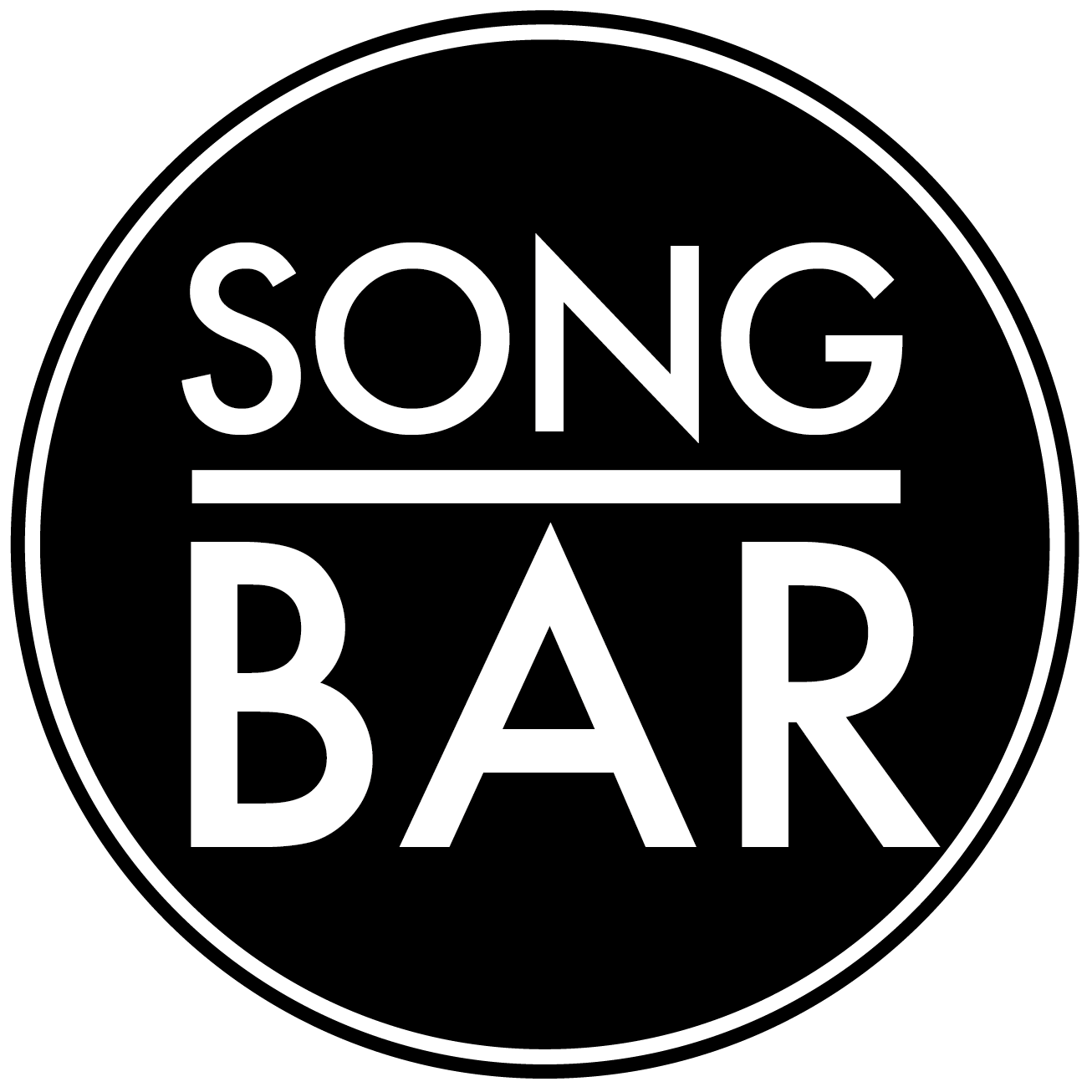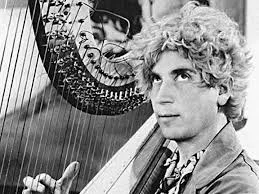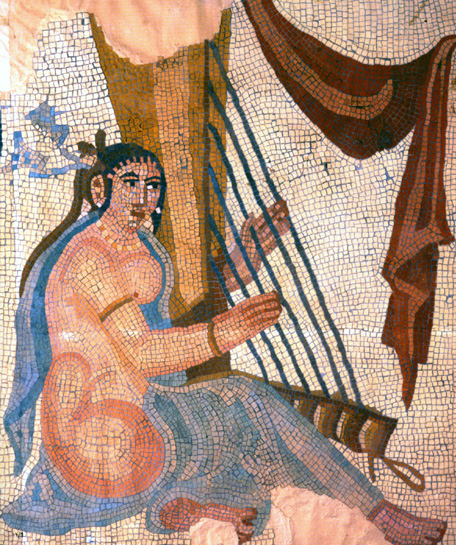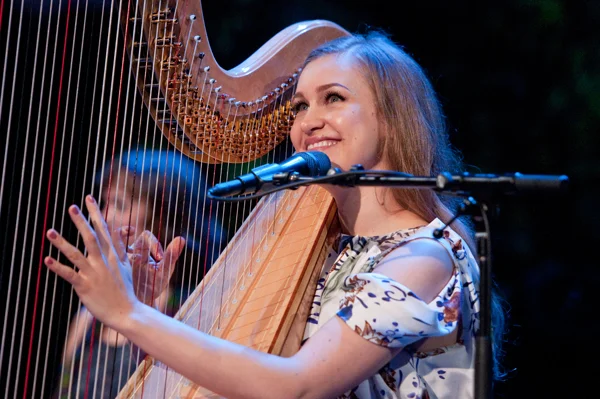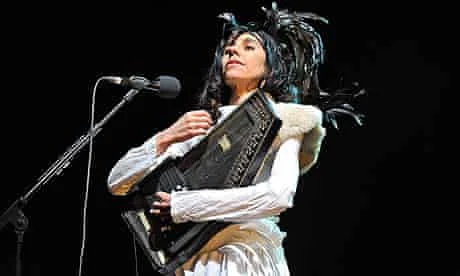By The Landlord
“A harp can be as dangerous as a sword, in the right hands.”
– George R.R. Martin, A Storm of Swords (Game of Thrones)
“Love took up the harp of Life, and smote on all the chords with might;
Smote the chord of Self, that, trembling, passed in music out of sight.” ~ Alfred Lord Tennyson
“Harpists spend 90 percent of their lives tuning their harps and 10 percent playing out of tune.” – Igor Stravinsky
“Our life contains a thousand springs,
And dies if one be gone.
Strange that a harp of thousand strings
Should keep in tune so long.” ― William Billings, composer
“And tears are heard within the harp I touch.” – Petrarch
As players’ fingers stroke and sweep across its myriad strings, it’s like a pebble hitting water in a stream, a musical ripple of pings and resonant rings. I’ve never touched a harp, have you? When hearing it, a strange, blurry, ethereal, musical magic is conjured, almost beyond my comprehension, but what a thing of beauty. “Heaven is on this earth. There are no angels on the clouds with twanging harps... That's just another man's fantasy,” said John Lydon, but today let’s bring a bit of heaven to the Bar. And after a tidal wave of recently wonderful wordy topics, including last week’s songs with idioms, I thought it would be good to have a palate cleanser with an instrument-led topic.
The harp appears to to be one of those highly expensive classical instruments far out of reach of the needs of the portable needs of a poorer string player, but it’s actually one of the oldest of instruments, and among most basic in its origins. Harps come in all shapes and sizes, hailing from Asia, spreading across Africa, Europe, America evolving into the simpler lyre, and appearing in Irish folk music, with the instrument as a national symbol.
The earliest harps and lyres were found in Sumer, 3500BC and several harps were found in burial pits and royal tombs in Ur.
Early harp mosaic from Bishapur, ancient Persia
A harp’s individual strings running at an angle to its soundboard. Different harps may use strings of catgut, nylon, metal, or some combination. While all harps have a neck, resonator, and strings, frame harps have a pillar at their long end to support the strings, while open harps, such as arch harps and bow harps, do not. But let’s not get over-technical, but instead get into the music.
Harp is most commonly associated with classical music, it spreads much wider. There are many great harpists across cultures. How about jazz? Dorothy Ashby was the great Detroit-born jazz harpist and composer who released a series of fabulous albums from 1958 to 1984, and also played alongside the likes of Stevie Wonder and Bill Withers.
But this week’s topic will also surely attract a host of great classical harpists and harp music. Here’s a selection to whet your appetites:
Fancy some Irish harp? Then first you might fancy a pint of this:
Sheer genius
Again, there are many great players, including the wonderful Derek Bell from The Chieftains, here performing exquisite work, though by contrast I couldn’t help resist a schoolboy smirk at discovering that there’s an album called Derek Bell Plays With Himself, as shown below:
In the pop-related genre there are many fabulous harp-featured songs, from the Beatles to several Björk which featured harpist Zeena Parkins. And let’s not forget of course Joanna Newsom, who has popped into the Bar to talk more about it. I am producing sounds that people are not used to hearing from the harp,” she tells us. Indeed so. But how does she work with the instrument? For Newsom, harp and singing become as one:
“I recorded harp first or singing first. I recorded it all together. Part of the reason is that I don't know how to play the songs without also singing. I forget how they progress. I don't think that any of them are verse, chorus, verse, and so on. They are not simple.” No doubt about that.
Joanna, not on the joanna, but the harp
Newsom’s complex work must surely also feature this week, and as poetic as it is, let’s also decorate this topic with more poems. First, the harp is an instrument of great physical intimacy. William Butler Yeats’s poem describes the creation of a harp of Aengus by Edain from apple wood and his own hair:
The Harp of Aengus
Edain came out of Midhir’s hill, and lay
Beside young Aengus in his tower of glass,
Where time is drowned in odour-laden winds
And Druid moons, and murmuring of boughs,
And sleepy boughs, and boughs where apples made
Of opal and ruhy and pale chrysolite
Awake unsleeping fires; and wove seven strings,
Sweet with all music, out of his long hair,
Because her hands had been made wild by love.
When Midhir’s wife had changed her to a fly,
He made a harp with Druid apple-wood
That she among her winds might know he wept;
And from that hour he has watched over none
But faithful lovers.
Now let’s enjoy some more:
Looking nineteen,
And not a day older,
And the harp with a woman’s head
Leaned against her shoulder.
Her thin fingers, moving
In the thin, tall strings,
Were weav-weav-weaving
Wonderful things.
– Edna St. Vincent Millay, The Harp Weaver
“ ’Tis believ’d that this harp which I wake now for thee
Was a siren of old who sung under the sea.”
~ Thomas Moore, The Origin of the Harp
“Time has laid his hand
Upon my heart gently, not smiting it,
But as a harper lays his open palm
Upon his harp, to deaden its vibrations.”
~ Henry Wadsworth Longfellow
But from the sublime to the ridiculous and back to the sublime again, what about Harpo Marx? While Groucho did most of the talking, and Chico played the piano, and Harpo with all the others, messed around with visual tomfoolery, every Marx Brothers film included a serene passage in which the self-taught player, who only began in his twenties, created extraordinary moments of calm and beauty in the otherwise brash knockabout chaos of their films.
Equally in A Night At The Opera there’s a scene where he messes around on the piano, and then sends a guffawing crowd into rapt hush: Playing Swanee River in the last film when he was 60, Love Happy (1949) is also one of his finest moments. “I am the most fortunate self taught harpist and non-speaking actor who ever lived,” he remarked, actually speaking for once.
There are some instruments that are called harps, but are actually not, but should we include them. Why not? An autoharp is a musical instrument in the chorded zither family. It features a series of chord bars attached to dampers, which, when pressed, mute all of the strings other than those that form the desired chord. The autoharp was originally a trademark of the Oscar Schmidt company, the term has colloquially come to be used for any hand-held, chorded zither. One of its most famous recent players is PJ Harvey:
PJ Harvey on autoharp (not a harp, but a zither)
If we are going to include autoharps, let’s also throw in the zither - an instrument consisting of many strings stretched across a thin, flat body. Like a guitar or lute, a zither's body serves as a resonating chamber (sound box), but, unlike guitars and lutes, a zither lacks a distinctly separate neck assembly. The number of strings varies, from one to more than fifty. It’s so well known, the theme from Orson Welles' thriller film, The Third Man, composed and played by Anton Zaras has to get a mention, but less known are these words:
When a zither starts to play
You'll remember yesterday
In its haunting strain
Vienna lives again
Free and bright and gay
In your mind a sudden gleam
Of a half-forgotten dream
Seems to glimmer when you hear The Third Man theme
Last of all, the The Jew's harp, also known as the jaw harp, mouth harp, Ozark harp or juice harp, one of he oldest instruments, is neither Jewish nor a harp, but because of its name, let's include it too. It’s is a lamellophone instrument, consisting of a flexible metal or bamboo tongue or reed attached to a frame. The tongue/reed is placed in the performer's mouth and plucked with the finger to produce a note. The frame is held firmly against the performer's parted teeth or lips (depending on the type), using the jaw and mouth as a resonator, greatly increasing the volume of the instrument. Twang!
Jew’s harps. Again, not harps, but twangingly good
It’s best known for bluegrass and folk uses, but actually appears in all sorts of music across the world, as well as a memorably scene in The Wicker Man. The Austrian composer Johann Albrechtsberger—chiefly known today as a teacher of Beethoven—wrote seven concerti for Jew's harp, mandora, and orchestra between 1769 and 1771. One of its oddest players is the Siberian performer Uutai, who alongside extraordinary horse and other animal noises, plays it with real aplomb. She has actually appeared on Britain’s Got Talent, but I can’t bear to show that cringeworthy panel appearance, so let’s sample her in another strange environment, at a concert in Aldan in the Republic of Sakha Yakutia, Russia. The harp kicks in after about 2 minutes:
Who else plays this instrument? Plenty of people, including the The Who, that's who. On Join Together:
Now let us all join together, in that marvellously harmonious way that always happens at the Song Bar, in plucking out all sorts of songs and music featuring these wonderful instruments. Who will ultimately make these playlists? How will they be strung together? Only one person knows, and that’s this week’s guru - magicman! Deadline is Monday at 11pm UK time, for playlists published on Wednesday. No more harping on from me, let’s just get tuned up and be sharp with the harp.
New to comment? It is quick and easy. You just need to login to Disqus once. All is explained in About/FAQs ...
Fancy a turn behind the pumps at The Song Bar? Care to choose a playlist from songs nominated and write something about it? Then feel free to contact The Song Bar here, or try the usual email address. Also please follow us social media: Song Bar Twitter, Song Bar Facebook. Song Bar YouTube. Subscribe, follow and share.
